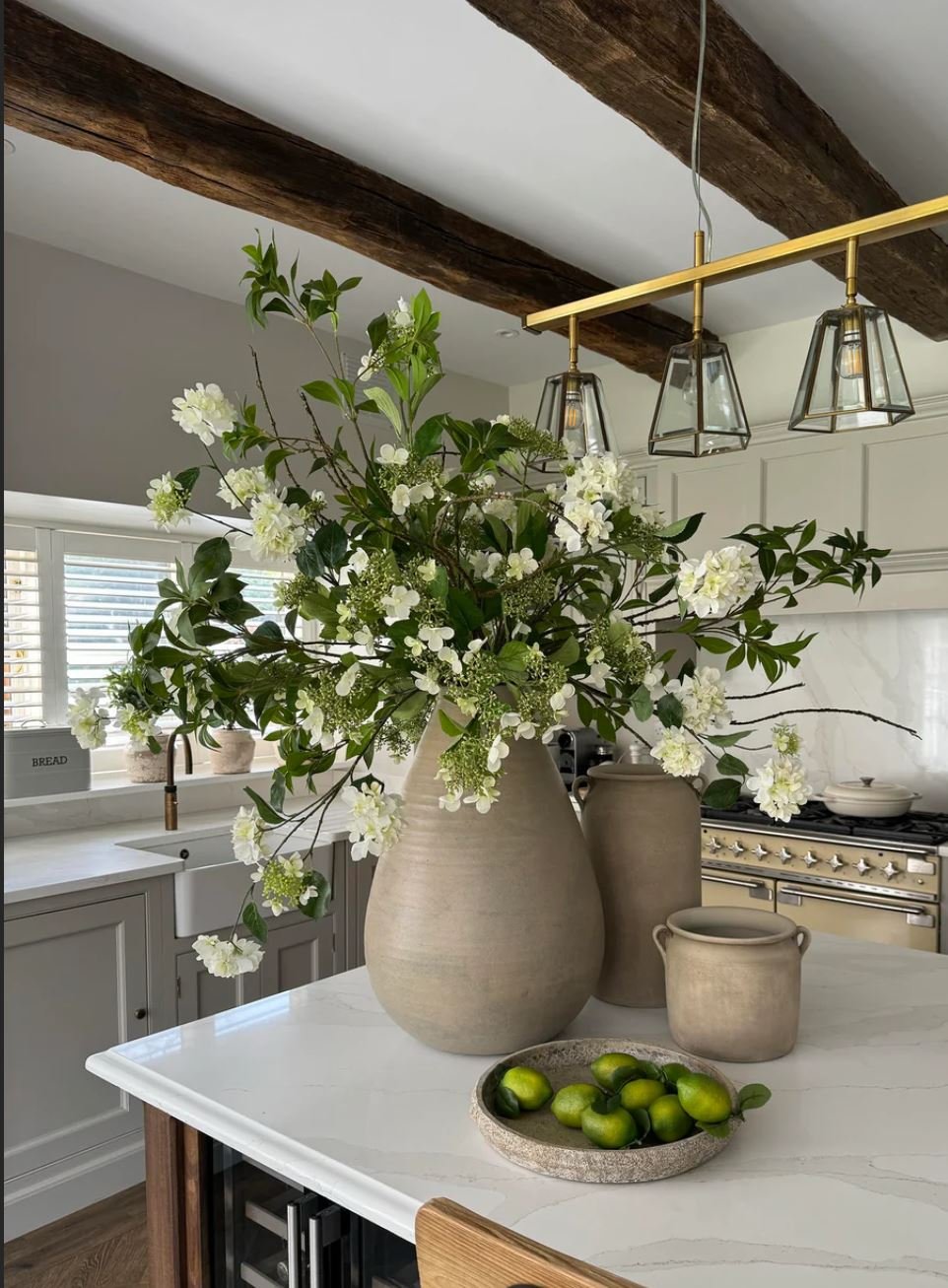6 Ways To Bring Texture Into Your Interiors
In the realm of interior design, texture is not merely a component but a critical element that elevates the sophistication of any space. Texture, in its essence, pertains to the tactile and visual qualities that materials impart to an environment. This encompasses a wide array of elements, from the plush feel of a bouclé throw to the rugged surface of a stone backsplash, each contributing uniquely to the room's ambiance.
UNDERSTANDING TEXTURE PLAYS AN IMPORTANT ROLE IN YOR INTERIOR
Understanding and manipulating texture is fundamental for creating a visually engaging and balanced interior. It involves an intricate play between different materials to achieve a harmonious yet dynamic aesthetic. Effective use of texture can enhance the spatial perception of a room, adding depth and interest. This is achieved through a variety of strategies including layering diverse textures, integrating contrasting materials, and employing lighting to accentuate these features.
The strategic application of texture not only defines the character of a space but also influences its visual weight, drawing attention to specific areas and elements within the room. Without the guided expertise of an interior designer, the complex layers and subtleties of texture might be overlooked, leading to a less cohesive aesthetic.
TO INCORPORATE TEXTURE IN TO YOUR DESIGN CONSIDER THESE SIX APPROACHES
Multiple Textures
Layer multiple textures to create a rich, engaging environment. Texture can come through in a whole host of ways.
For instance: matte versus glazed -ornaments on a bookcase, book spines stacked on a side table aside a sculpted glass lamp base, a polished granite fireplace hearth with a rug in front of it.
Or even wall treatments and artwork that have the ability to make the walls feel multi-dimensional.
Contrasting Fabrics
Use contrasting fabrics to provide balance and visual interest.Does your color palette consist mainly of similar shades? Break the monotony by varying the textures of fabrics throughout the space.
Even if your decor features diverse shades, incorporating different fabrics demonstrates that color and pattern aren't the sole means to create variation.
Be sure to consider not just the obvious items like sofas and armchairs but also include curtains, blinds, and lampshades.
Additionally, adapt these textural differences with the changing seasons—for instance, transition a linen sofa from cotton and silk cushions in summer to velvet and faux fur cushions in winter.
Furniture Options
Explore the tactile qualities of furniture, which can significantly enhance the user's physical interaction with the space.Exploring the texture of furniture is especially worthwhile given the likelihood of physical interaction. Picture sliding your hand across a cool, smooth marble table, dining at a rustic oak table, opening drawers lined with shagreen, or relaxing on a plush velvet sofa.
The appeal of texture isn't always overt; it's the subtle variations that captivate as your gaze travels around the room.
Textured Accessories
Incorporate textured accessories like vases and mirrors to introduce subtle yet impactful variations. Careful to not add too many competing finishes into the room though or the lack of link could produce a lack of direction.
The objective isn’t to fill your room with every different texture under the sun, but to welcome an assortment of characters that are sympathetic to one another and unite to inject variation and intrigue in your room.
Decorate with Plants & Flowers
Decorate with plants and flowers, utilizing their natural differences in texture to enrich the room's design.While you can physically touch plants, they primarily contribute a visual texture.
The variation in form, petal and leaf shapes, height, color, and container all contribute to a room's textural decor.
Aim to select plants and flowers that complement other textures in the space, like the shiny green leaves of a large palm coordinating with sleek, lacquered furniture.
Likewise, choose vases that echo existing textures in the room, whether in ornaments or lamp bases.
The Power Of Lighting
Don’t underestimate the power of lighting; it can transform the textural feel of the space through both the fixture’s materiality and the quality of light emitted. Lighting in a room offers a dual aspect of texture. The design and material of the lamp itself contribute to the room's texture.
For instance, a high-shine chrome floor lamp provides a distinct texture compared to a hammered bronze wall sconce.
However, the texture becomes more visually apparent through the light rays themselves. Warm white light (about 300 kelvins) casts a softer, more ambient glow, while cool white light (around 500 kelvins) emits a brighter, more contemporary beam that can make the atmosphere feel more stark.
The placement of these light sources also affects texture— an unlit corner can transform into an inviting reading nook with strategic lighting. Lighting is arguably the most complex element when it comes to texture, involving a mix of different source styles, selecting the appropriate bulb temperature, and arranging light sources at various levels to create layers of illuminated texture throughout the room.







